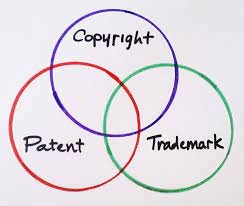
Genericide: The Story of Trampoline
The case of 'Trampoline' highlights the importance of policing your trademark and trademark management, especially for products that are pioneers in their field. When a new and innovative product is introduced, the brand name can often become synonymous with the product itself, leading to a higher risk of genericization. This example also underlines the challenges in maintaining a trademark for a product whose name is inherently descriptive or functional.

Genericide: The Decline of Yo-Yo
The case of "Yo-Yo" offers a fascinating example of genericide in trademark law, where the transition from a brand name to a generic term was influenced by the product's functional success rather than just commercial dominance. Introduced by Pedro Flores and later popularized by the Duncan Toys Company, the term "Yo-Yo" originally referred to a specific brand of the toy. However, as the yo-yo's popularity grew and competitors emerged, the term "Yo-Yo" became widely used to describe any similar toy, leading to its loss of trademark protection. This case highlights the challenges faced by brands when their product names are highly descriptive and emphasizes the importance of proactive trademark management and distinctive branding strategies in preventing genericide.

Genericide: The Case of Laundromat
The case of "Laundromat" provides an interesting example of genericide in trademark law, where the shift from a brand name to a generic term was driven by consumer adoption of a convenient descriptor for a novel service, rather than the product's commercial success. Coined and registered by Westinghouse Electric Corporation in the 1940s, "Laundromat" originally referred to Westinghouse's automated laundry equipment. However, as self-service laundry facilities became popular, the term began to be used generically to describe any coin-operated laundry establishment, ultimately leading to the loss of its trademark protection. This case highlights the influence of language and consumer behavior on trademarks and underscores the challenges faced by companies when their brand name succinctly describes the product or service offered.

Four Effective Ways To Safeguard Your Trademark
Ensure your trademark serves as a distinctive source identifier for your products or brand. Just as a name tag identifies a person, a source identifier tells consumers the origin of a product or service.

What is Trademark Policing?
Trademark policing refers to the active and continuous monitoring and enforcement of your trademark rights. It involves taking legal action to prevent and stop others from using your trademark without your permission.

Patents, Trademarks, and Copyrights - A Guide from Jones Intellectual Property
Understanding the differences between patents, trademarks, and copyrights is crucial for creators and businesses, as each type of protection serves a unique purpose in securing intellectual property rights.
